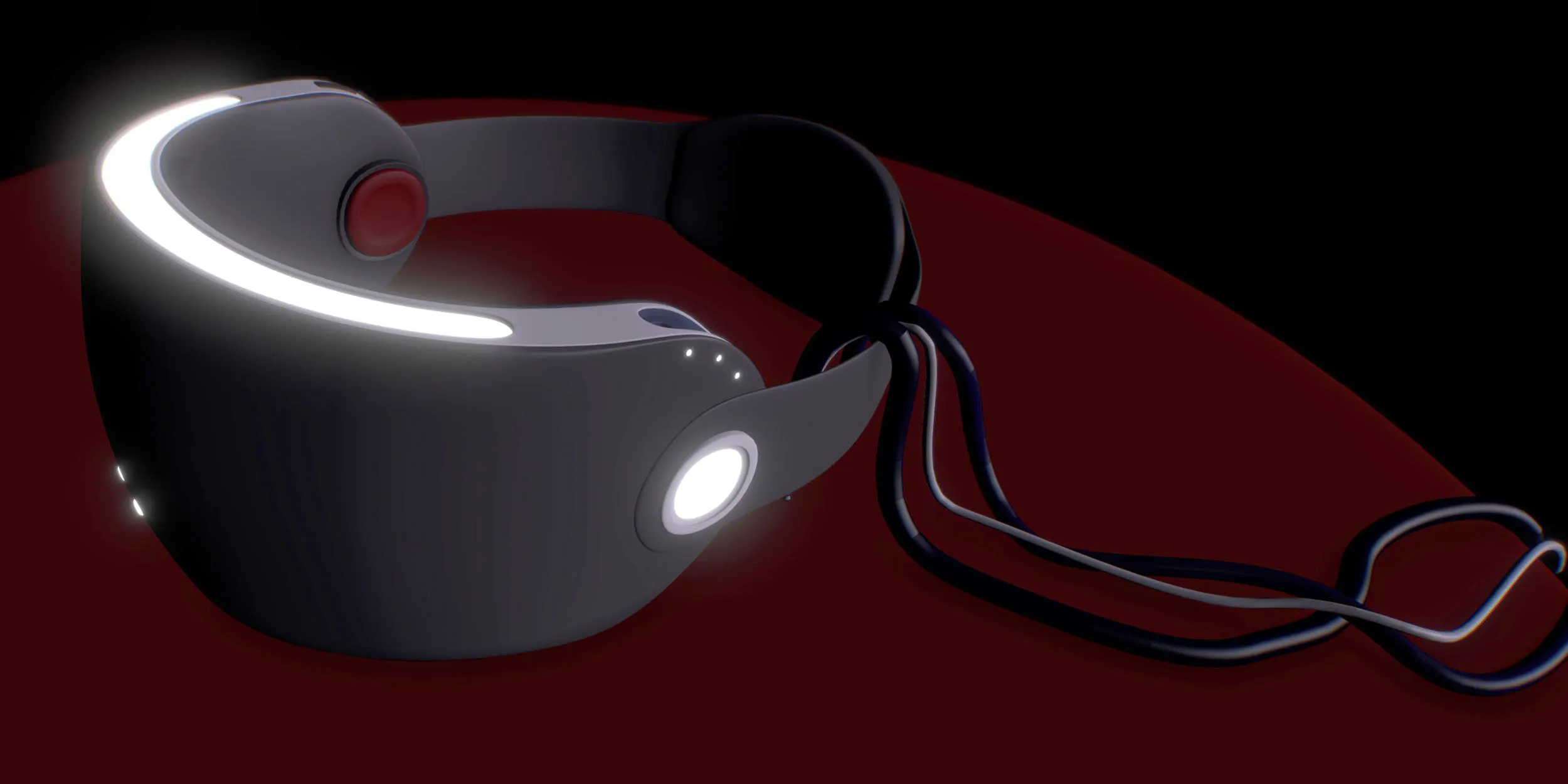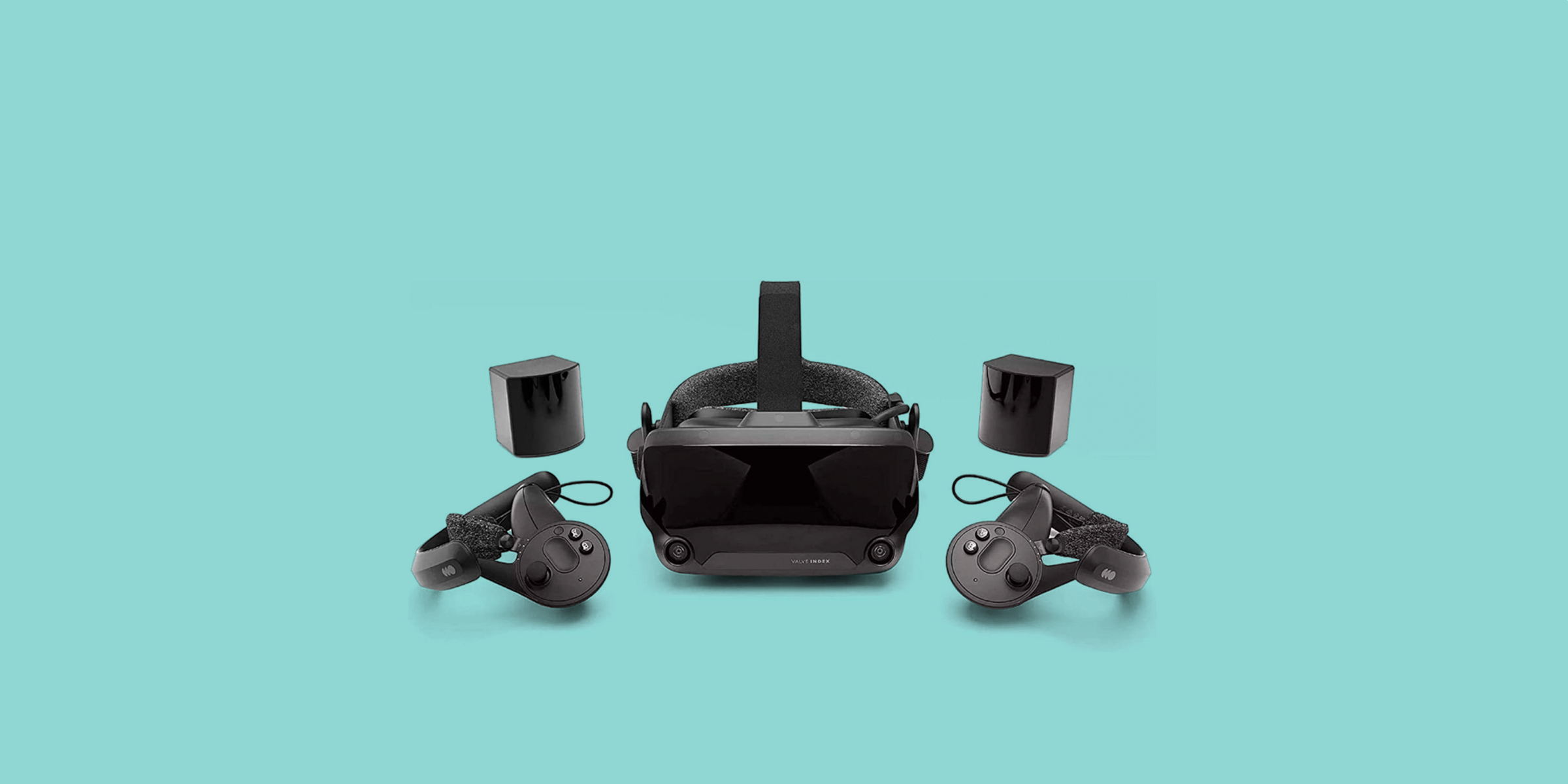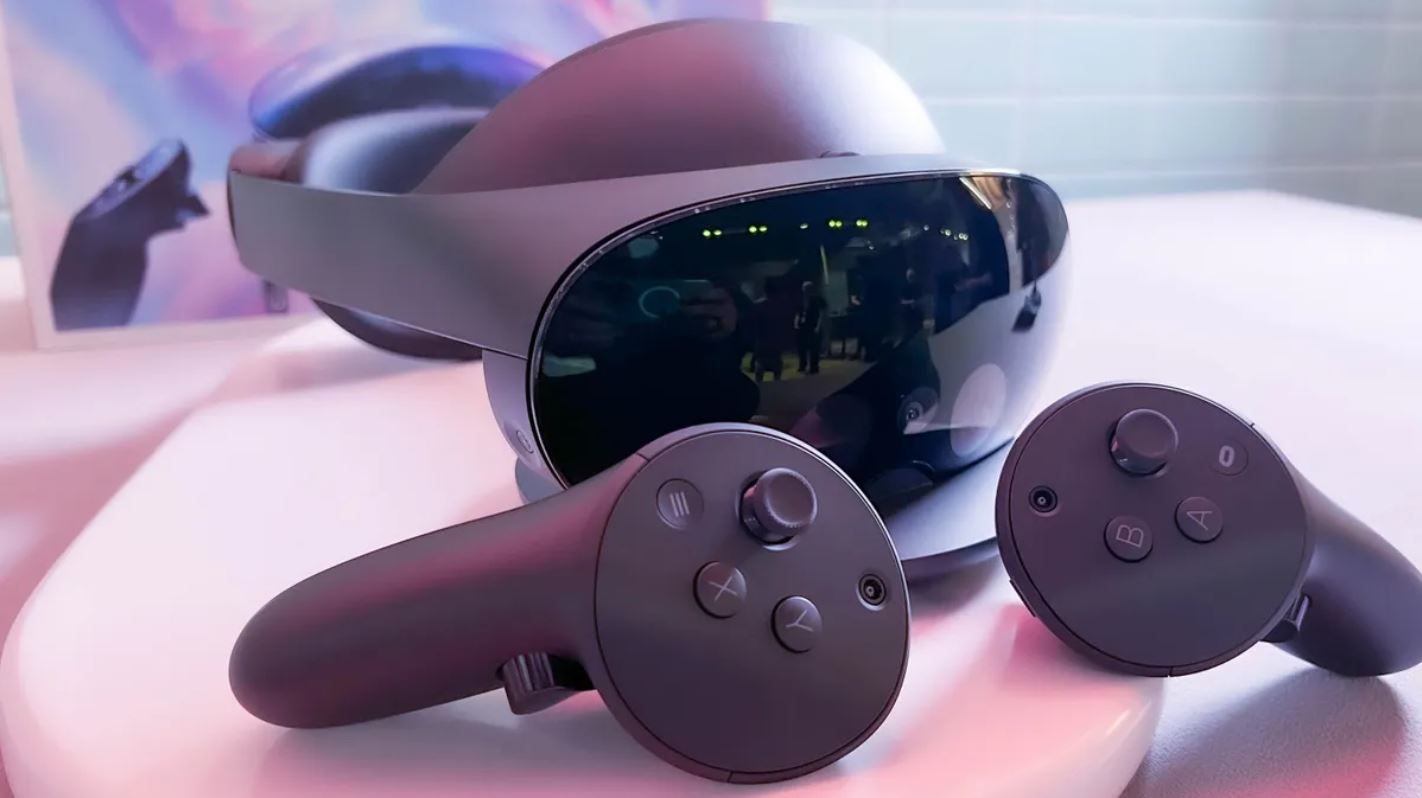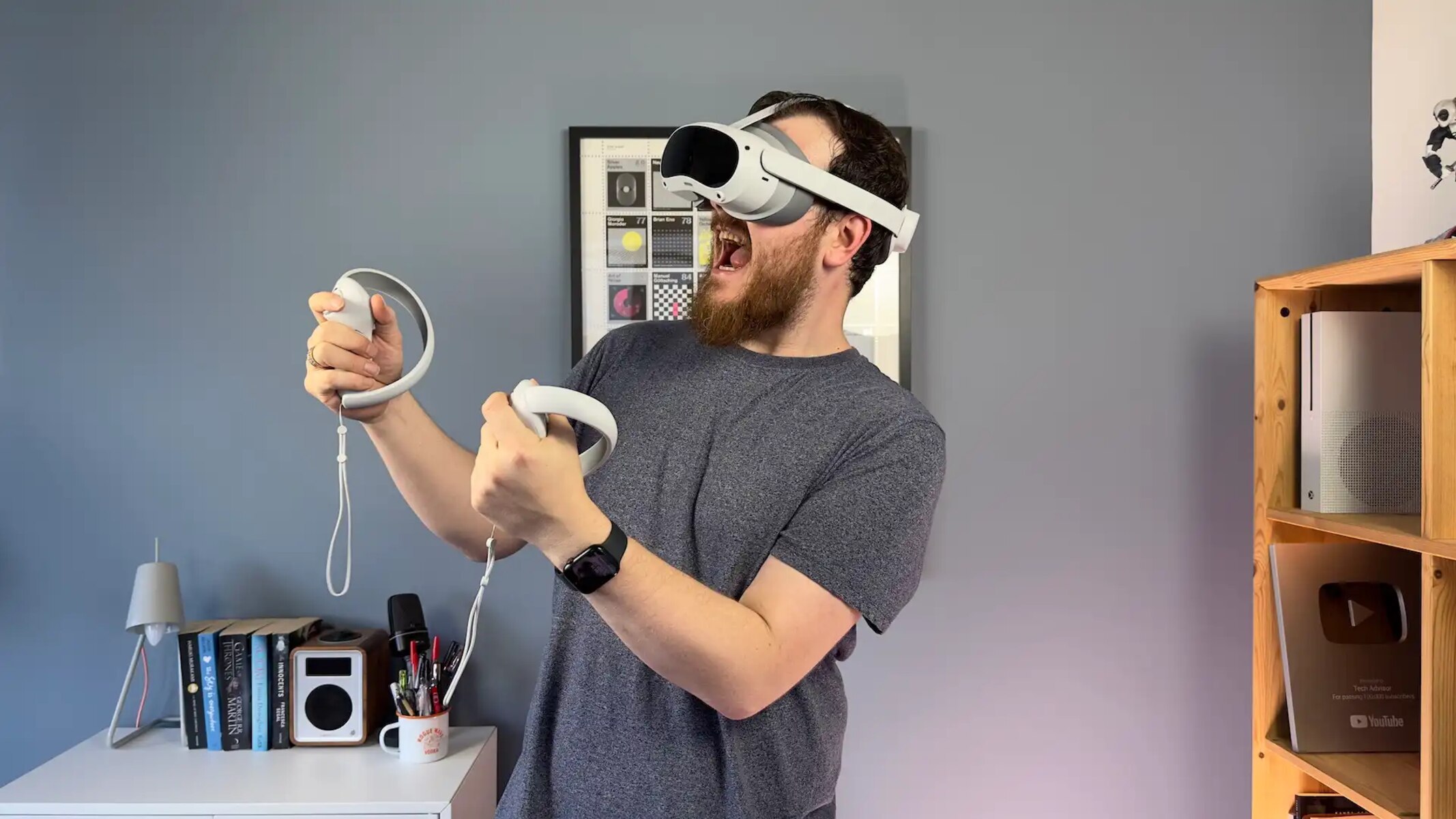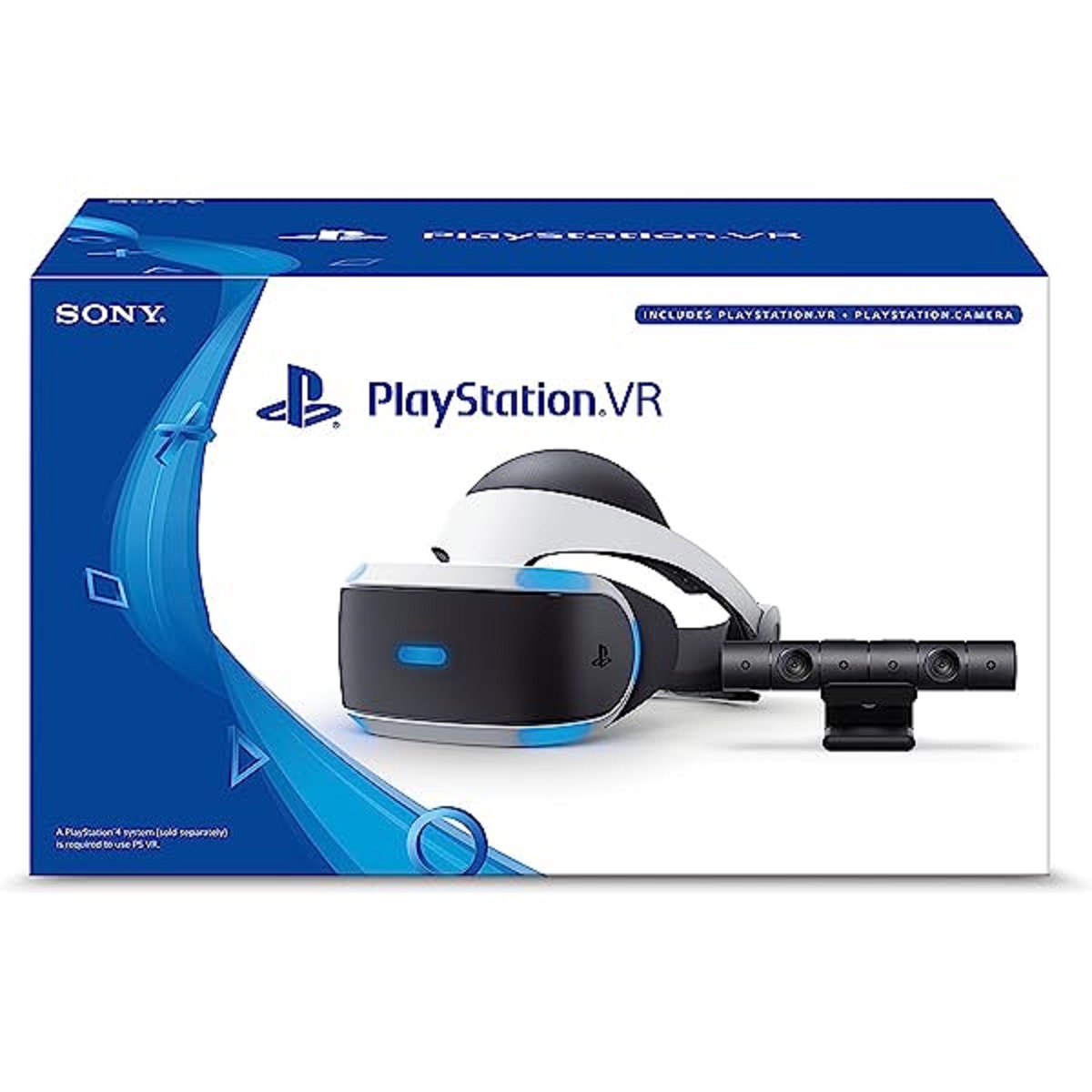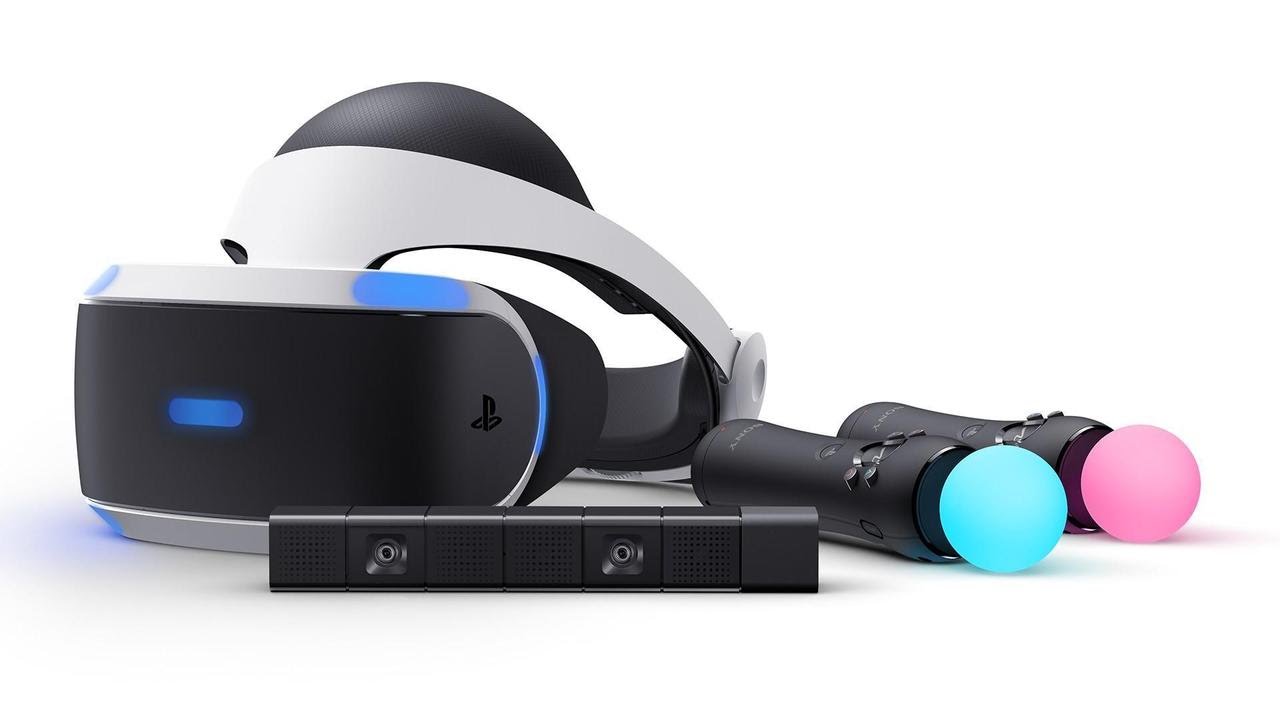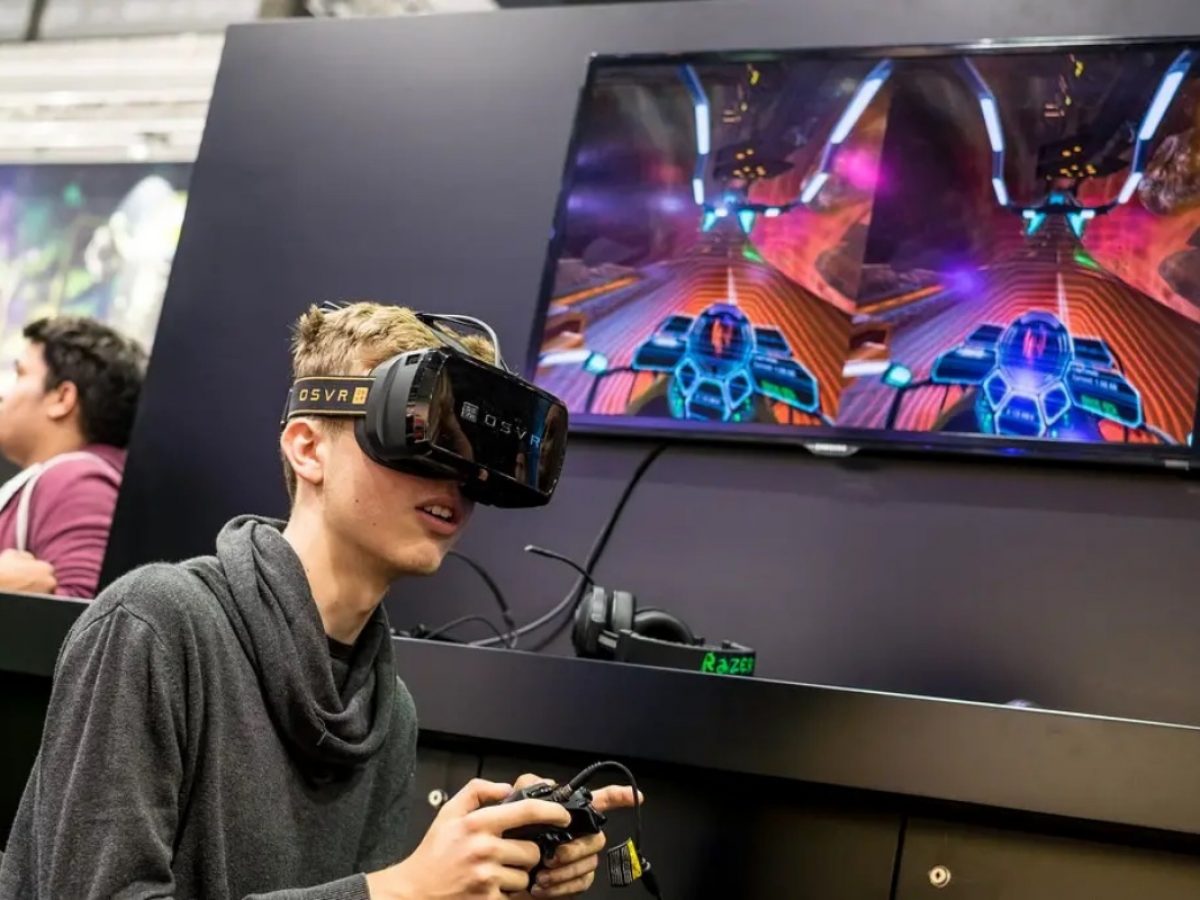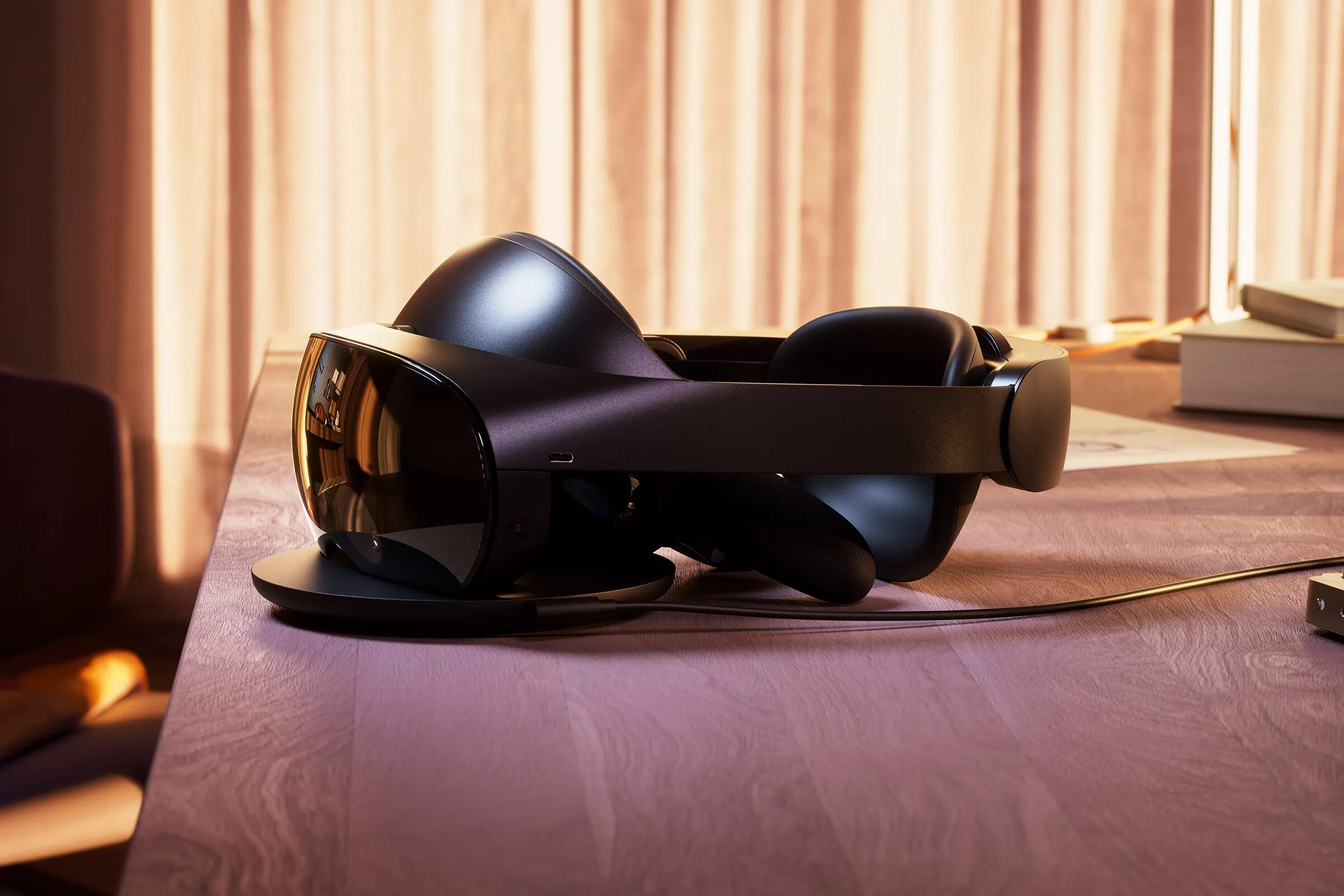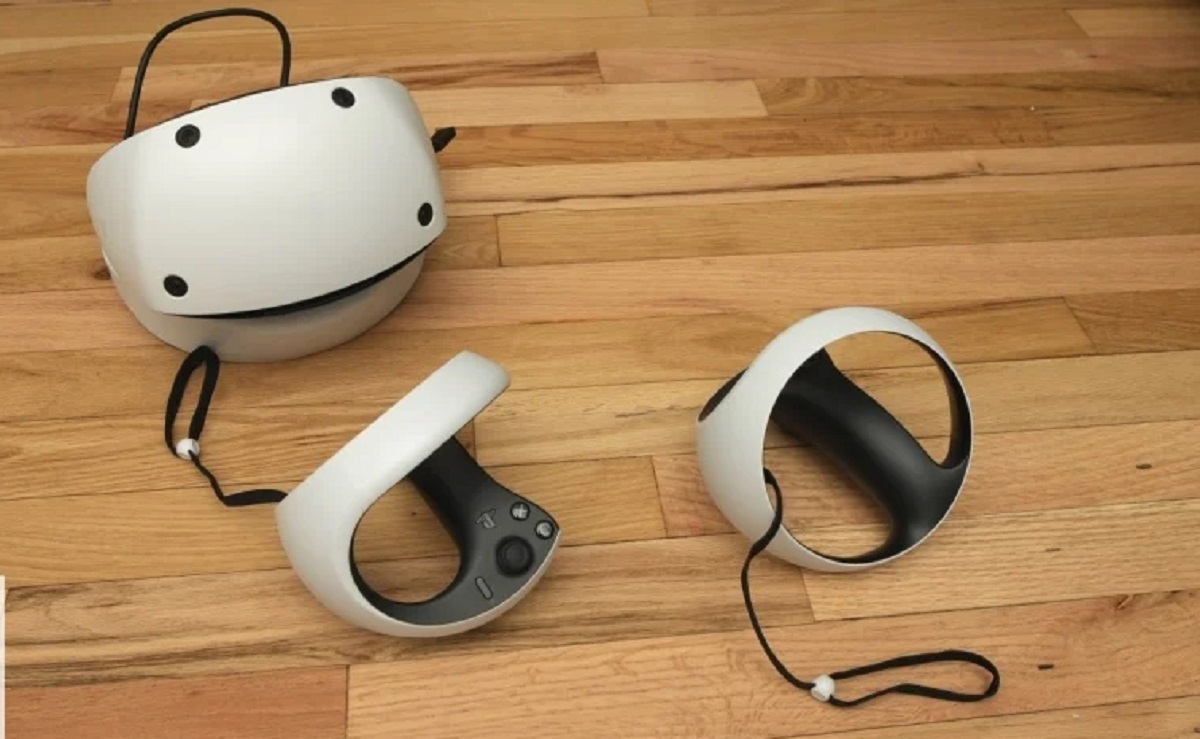Introduction
Welcome to the exciting world of virtual reality (VR) gaming! Whether you’re a casual player or a hardcore enthusiast, owning a VR headset opens up a whole new realm of immersive experiences. To make sure your VR adventures never have to come to an abrupt end, it’s essential to know how to properly charge your VR headset.
A well-charged VR headset ensures that you’ll have an uninterrupted gaming session or a deeply engrossing virtual experience. However, selecting the right charging cable, understanding the optimal charging duration, and following proper charging techniques are crucial for maintaining the longevity of your VR headset’s battery life.
In this article, we’ll guide you through the process of charging your VR headset, providing you with essential tips and tricks to keep your device powered up and ready for action. So, let’s dive in!
Choosing the Right Charging Cable
The first step in effectively charging your VR headset is selecting the appropriate charging cable. Different VR headsets utilize various charging ports or cables, so it’s important to ensure compatibility. Some headsets use micro USB, while others require USB-C or proprietary connectors. Consult your headset’s user manual or the manufacturer’s website to identify the correct type of cable.
How Long Should You Charge a VR Headset?
The charging duration for a VR headset depends on the specific model and battery capacity. Generally, it is recommended to charge the headset until it reaches full capacity. Most VR headsets come with an indicator light that turns green or displays a full battery symbol when it’s fully charged.
Allowing the headset to charge for too long can lead to overcharging, which can put unnecessary strain on the battery and affect its overall health. However, undercharging the device may result in shorter battery life during usage. Striking a balance by charging until full and then promptly disconnecting is the best approach.
Proper Charging Techniques
It’s important to follow some basic charging techniques to optimize the battery life and performance of your VR headset:
- Always charge your VR headset using the supplied or manufacturer-recommended cable and power adapter.
- Connect the cable firmly to the charging port on the headset.
- Ensure that the charging port and cable are free from any debris or obstructions.
- Plug the other end of the cable into a wall outlet or a reliable power source.
- Avoid charging the VR headset while wearing it to prevent any discomfort.
Choosing the Right Charging Cable
When it comes to charging your VR headset, one of the key factors to consider is selecting the right charging cable. Different VR headsets utilize various charging ports or cables, so it’s important to ensure compatibility to avoid any damage to your device.
The first step is to check your VR headset’s user manual or the manufacturer’s website to identify the specific type of charging cable required. Some headsets use micro USB, while others may use newer USB-C connectors or proprietary charging ports.
If your VR headset uses a micro USB cable, it’s a widely available and commonly used standard. You might even have one lying around from other devices like smartphones or tablets. However, make sure the cable is in good condition and capable of transmitting data and power effectively. Low-quality or damaged cables may not charge your VR headset efficiently or could potentially harm the device.
For VR headsets that require USB-C connectors, ensure that you use a cable that supports the necessary power output and data transfer capabilities. USB-C cables with higher wattage ratings offer faster charging speeds, but it’s important to follow the manufacturer’s recommendations to prevent any power issues or damage to your headset.
In some cases, VR headsets have proprietary charging ports, which means they require specific cables provided by the manufacturer. These proprietary cables are designed to meet the specific power requirements of the headset and ensure safe and efficient charging. Always use the supplied cable or a genuine replacement cable recommended by the manufacturer to avoid any compatibility or safety issues.
Remember, using the wrong charging cable can potentially damage the charging port or battery of your VR headset. It’s always better to be safe than sorry by double-checking the required cable specifications and using the appropriate one.
Additionally, when purchasing a charging cable, consider the length that suits your needs. If you plan to charge your VR headset while using it, a longer cable is recommended for flexibility and comfort. However, if you primarily charge your headset overnight or when not in use, a shorter cable may be more convenient to manage.
By choosing the right charging cable for your VR headset, you can ensure a safe, efficient, and seamless charging experience, allowing you to enjoy your virtual reality adventures without interruption.
How Long Should You Charge a VR Headset?
The charging duration for your VR headset depends on the specific model and its battery capacity. While there isn’t a universal charging time that applies to all headsets, there are some general guidelines to follow to ensure optimal charging and battery life.
The first and most important rule is to charge your VR headset until it reaches its full capacity. Most headsets come with an indicator light that turns green or displays a full battery symbol when it’s fully charged. It’s crucial to allow your headset to charge until it reaches this point before disconnecting it from the power source.
Overcharging your VR headset can have negative consequences for the battery’s health. Leaving it connected to the charger for an extended period, even after it has reached full capacity, can put unnecessary strain on the battery, leading to decreased overall performance and battery life over time.
On the other hand, undercharging your VR headset regularly can also impact battery life. If you disconnect your headset before it reaches full capacity, it may result in shorter battery life during usage. To avoid this, strive to find the right balance by charging until full and then promptly disconnecting from the power source.
The charging time for a VR headset can vary depending on several factors, such as battery size, charging speed, and the amount of remaining charge. Generally, it takes between 2 to 4 hours to fully charge a VR headset with an average-sized battery. However, it’s essential to consult your headset’s user manual or the manufacturer’s recommendations for specific charging times.
If you’re in a hurry and need a quick boost, most VR headsets offer a feature called fast charging. This technology allows for faster charging times, usually by delivering higher voltage or current to the battery. However, it’s important to note that fast charging may generate more heat, which could potentially affect the longevity or safety of the battery. Use fast charging sparingly and follow the manufacturer’s guidelines to avoid any adverse effects.
Ultimately, the goal is to maintain a healthy battery life for your VR headset. By charging until full, avoiding overcharging, and disconnecting promptly, you can ensure that your headset remains powered and ready for your next virtual adventure.
Proper Charging Techniques
To ensure optimal charging performance and maximize the battery life of your VR headset, it’s important to follow some basic charging techniques. By implementing these best practices, you can maintain the longevity and reliability of your device:
- Always use the supplied or manufacturer-recommended cable and power adapter: The charging cable and power adapter included with your VR headset are specifically designed to provide the correct voltage and current for safe and efficient charging. Using generic or incompatible chargers can harm your device’s battery or even pose a safety risk.
- Connect the cable firmly to the charging port on the headset: Ensure that the charging cable is securely inserted into the charging port of your VR headset. A loose connection can result in intermittent charging or damage to the charging port.
- Keep the charging port and cable clean: Periodically inspect the charging port and cable for any dust, debris, or dirt. Use a soft, lint-free cloth to gently clean them. A clean connection ensures smooth charging and prevents any potential damage caused by obstruction.
- Use a reliable power source: Plug the other end of the charging cable into a wall outlet or a reliable power source. Avoid using USB ports on computers or low-quality power banks, as they may not provide sufficient power output for efficient charging.
- Avoid charging while wearing the VR headset: It’s advised to remove the VR headset while charging to ensure maximum comfort and prevent any discomfort or strain caused by the charging cable.
While following these charging techniques is essential, it’s also worth noting that excessive heat can affect the battery life and performance of your VR headset. To avoid overheating, keep your headset in a well-ventilated area while charging and avoid placing it near heat sources or direct sunlight.
Additionally, it’s crucial to be mindful of the charging duration and not leave your VR headset connected to the charger for longer than necessary. Overcharging can negatively impact the battery’s health and longevity, so always monitor the charging progress and disconnect once the headset reaches its full capacity.
By adhering to these proper charging techniques, you can ensure efficient and safe charging for your VR headset, promoting a longer battery life and allowing you to have uninterrupted virtual reality experiences.
Charging Port Safety Tips
The charging port on your VR headset is a critical component that facilitates the charging process. To ensure its longevity and maintain the overall safety of your device, here are some essential charging port safety tips to keep in mind:
- Handle the charging port with care: The charging port is a delicate component, and rough handling can cause damage. Avoid inserting the charging cable forcefully or at an awkward angle, as it can result in bent or broken pins within the port.
- Avoid inserting foreign objects: Never attempt to insert any foreign objects into the charging port. Doing so can cause electrical short circuits, damage the port, or even pose a risk of electric shock.
- Keep the charging port clean: Regularly inspect the charging port for any dust, debris, or lint that may have accumulated. Use a soft brush or compressed air to gently remove any unwanted particles, ensuring a clean and unobstructed connection.
- Protect the charging port from moisture: Moisture or water can lead to corrosion within the charging port and cause damage. Avoid charging your VR headset in humid or wet environments, and never connect the cable with wet hands.
- Use protective covers or caps: Some VR headsets come with protective covers or caps for the charging port. When not in use, consider using these covers to prevent dust, debris, or accidental damage from entering the port.
It’s important to note that using a charging cable that fits securely and snugly into the charging port can help reduce wear and tear on the port. Avoid using loose or damaged cables that may intermittently disconnect or place unnecessary strain on the port. Regularly inspect both the cable and the port to ensure they are in good condition.
If you encounter any difficulties or issues while inserting or connecting the charging cable, do not force it. If the cable does not fit smoothly, double-check that you have the correct cable for your VR headset and verify that there are no obstructions or debris in the charging port.
By following these charging port safety tips, you can ensure the longevity and proper functioning of the charging port on your VR headset. Taking care of this crucial component will contribute to a reliable and safe charging experience, keeping your VR adventures going strong.
Overcharging and Battery Health
Overcharging refers to leaving your VR headset connected to the charger for an extended period, even after it has reached full capacity. While it may seem harmless, overcharging can have detrimental effects on your device’s battery health and overall performance.
One of the main concerns with overcharging is that it can lead to excessive heat buildup within the battery. Elevated temperatures can degrade the battery’s chemistry and capacity over time, resulting in decreased battery life and overall performance. Moreover, continuous exposure to high temperatures can even pose safety risks, including the potential for battery swelling or, in rare cases, combustion.
To prevent overcharging and maintain optimal battery health, it’s essential to follow these guidelines:
- Charge until full: Allow your VR headset to charge until it reaches its full capacity. Most headsets have indicator lights that turn green or display a full battery symbol when fully charged. Once the charging is complete, promptly disconnect the headset from the power source.
- Avoid leaving it plugged in overnight: While it may be convenient to leave your VR headset charging overnight, it’s best to avoid this practice. Leaving it connected for an extended period can increase the risk of overcharging and the associated negative effects on battery health.
- Disconnect when not in use: When you’re not actively using your VR headset, disconnect it from the charger. This prevents the battery from being constantly topped up and avoids unnecessary strain on the battery caused by overcharging.
It’s important to note that modern VR headsets are designed with built-in measures to prevent overcharging. Once the battery reaches its full capacity, the charging process is automatically discontinued. However, relying solely on these safety mechanisms is not advisable, as they may not always be foolproof.
Additionally, it’s worth mentioning that occasional short charging sessions or “top-up” charges are generally safe and may not have a significant impact on battery health. However, frequent or prolonged overcharging can gradually degrade the battery’s capacity and performance over time.
By practicing proper charging habits and avoiding overcharging, you can help preserve the battery health of your VR headset. This ensures that you’ll enjoy longer battery life and extend the longevity of your device, allowing you to immerse yourself in virtual reality experiences with peace of mind.
Alternative Charging Options
While the standard method of using a charging cable and wall outlet is the most common way to charge a VR headset, there are alternative charging options available that can provide convenience and flexibility. Exploring these alternatives can be especially useful when you’re traveling or don’t have immediate access to a power outlet. Here are a few alternative charging options to consider:
- Power Banks: Power banks, also known as portable chargers, are compact, portable devices that store electrical energy. They usually come with USB ports, allowing you to connect your VR headset to charge on the go. When choosing a power bank, ensure that it supports the necessary voltage and current requirements of your headset.
- Car Chargers: If you’re frequently on the road, a car charger can be a convenient option for charging your VR headset. Car chargers plug into the cigarette lighter socket and allow you to charge your headset using the vehicle’s electrical system. Make sure to use a car charger that is compatible with your VR headset and provides the appropriate power output.
- Wireless Charging: Some VR headsets support wireless charging technology. Instead of using a physical cable, you can place your headset on a compatible wireless charging pad or dock to charge it. This eliminates the need for constant plugging and unplugging of cables, providing a more seamless and convenient charging experience. Note that wireless charging may be slower than traditional cable charging.
When utilizing alternative charging options, it’s important to ensure that the charging method you choose provides the necessary power output and is compatible with your VR headset. Consult your headset’s user manual or the manufacturer’s recommendations to verify compatibility before using any alternative charging option.
It’s worth noting that while alternative charging options can be convenient, they may not always provide the same charging speed or efficiency as a direct connection to a power outlet. If possible, it’s still recommended to use the standard charging method for optimal charging performance and battery health.
By exploring alternative charging options, you can have more flexibility in powering up your VR headset, whether you’re on the go, outdoors, or in a situation where a power outlet is not readily available. Just make sure to choose reliable and compatible charging solutions to ensure a safe and effective charging experience.
Troubleshooting Common Charging Issues
While charging your VR headset is typically a straightforward process, there may be times when you encounter certain issues. Here are some common charging problems and their possible solutions:
- Charging cable not recognized: If your VR headset doesn’t recognize the charging cable, try the following steps:
- Ensure that the cable is securely connected to both the headset and the power source.
- Check for any visible damage or fraying on the cable and replace it if necessary.
- Try using a different charging cable or power adapter to rule out any faults with the original equipment.
- Slow or no charging: If your VR headset is charging slowly or not charging at all, consider these troubleshooting steps:
- Verify that the power source is working correctly by connecting another device to it.
- Disconnect and reconnect the charging cable at both ends to ensure a proper connection.
- Check for any debris or dust that may have accumulated in the charging port and clean it gently using a soft brush or compressed air.
- Restart your VR headset and try charging it again.
- Overheating during charging: If your VR headset becomes excessively hot while charging, follow these steps:
- Disconnect the charging cable and allow the headset to cool down for some time.
- Check for any obstructions or coverings that may be blocking ventilation on the headset.
- Ensure that you’re charging your headset in a well-ventilated area away from direct sunlight or heat sources.
- Intermittent charging: If your VR headset is charging on and off, try these troubleshooting steps:
- Check for any debris or foreign objects lodged in the charging port and remove them carefully.
- Ensure that the charging cable is securely connected to both the headset and the power source. A loose connection can cause intermittent charging.
- Inspect the cable for any signs of damage or fraying and consider replacing it if necessary.
If you’ve gone through these troubleshooting steps and are still experiencing charging issues, it’s recommended to reach out to the manufacturer’s support or customer service for further assistance. They can provide specific guidance based on your VR headset model and help resolve any underlying problems.
Remember, troubleshooting charging issues may vary depending on the specific VR headset you own. It’s always a good idea to consult the device’s user manual or the manufacturer’s online resources for model-specific troubleshooting tips and instructions.
By following these troubleshooting suggestions, you can often overcome common charging problems and ensure a smooth and reliable charging experience for your VR headset.
Conclusion
Charging your VR headset properly is essential for keeping your virtual reality experiences uninterrupted and enjoyable. By following the right techniques, you can prolong the battery life and maintain the optimal performance of your headset.
Start by ensuring that you have the correct charging cable for your VR headset. Using the wrong cable can lead to compatibility issues or even damage to the charging port. Always refer to the manufacturer’s recommendations to determine the appropriate cable and power adapter to use.
When charging your headset, make sure to allow it to charge until it reaches full capacity. Overcharging can strain the battery and impact its long-term health, while undercharging may result in shorter battery life during usage. Striking the right balance is key.
Follow proper charging techniques, such as firmly connecting the charging cable, keeping the charging port and cable clean, and using reliable power sources. These practices will ensure efficient and safe charging for your VR headset.
Be aware of the potential risks of overcharging, such as excessive heat buildup within the battery. Overheating can degrade the battery’s chemistry and capacity, leading to decreased performance and reduced battery life. Avoid leaving your headset connected to the charger for extended periods.
Consider alternative charging options when necessary, such as portable power banks or car chargers, for added convenience and flexibility. Just make sure they provide the necessary power output and are compatible with your VR headset.
If you encounter any charging issues, troubleshoot by checking the cable connections, cleaning the charging port, and verifying the power source. If problems persist, consult the manufacturer’s support for further assistance.
By adhering to these guidelines, you can maintain a healthy and durable battery for your VR headset, ensuring that it’s always ready for your immersive virtual reality experiences. Enjoy the exciting world of VR gaming with a headset that’s powered up and raring to go!







